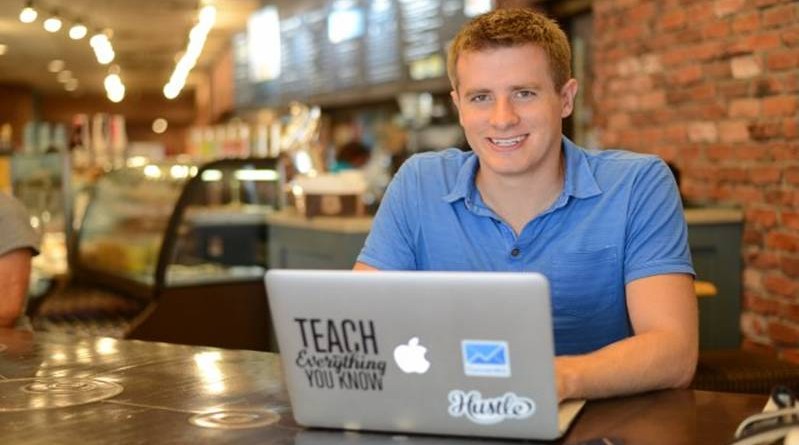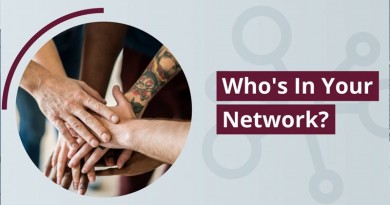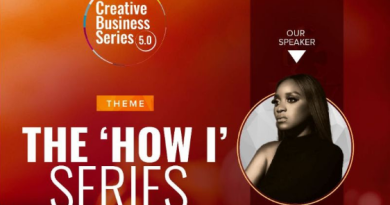The Brutal Truths That Helped This 28-Year-Old Build Convertkit, a $9.5 Million Business
Ever want to know what co-workers say about you when you aren’t in the room? Entrepreneur Nathan Barry does, and he thinks it’s important for his employees to know too.
Twice a year, the staff of his fast-growing email-marketing company, ConvertKit, meets in small groups, and each person takes a turn in the hot seat while the group talks about them, unfiltered, as if they weren’t there. After 10 minutes, they have five minutes to ask questions and respond.
“Our goal is to set a culture of direct feedback,” says Barry. Building relationships that foster a collaborative environment would otherwise be a challenge for his 35-person all-remote team. It’s scattered across the U.S., Canada, India, and Europe, and apart from these biannual retreats, they interact mainly on Basecamp, Slack, and Zoom.
The practice is just one example of Barry’s zest for collaboration and transparency. It manifests throughout ConvertKit’s business, extending to marketing, employee pay, and an open-book policy that shares company financials on a public website.
The unconventional approach appears to be paying off. Last year, Boise, Idaho-based ConvertKit grew to more than $9.5 million in revenue–more than double its $4 million in 2016–and landed on the 2018 Inc. 5000 list of fastest-growing U.S. private companies at No. 72. Barry, 28, was also named to Inc.‘s 2018 30 Under 30 list.
Barry is convinced that his dedication to openness and candid exchanges is key to his success. He says ConvertKit started the “unsolicited feedback” exercise, as it’s known internally, because he experienced its benefits himself. It was part of the routine of his local “mastermind” group, which lends support and advice to entrepreneurs.
The constructive criticism that some people may want to hold back is “probably the actual stuff that will lead to growth,” says Barrett Brooks, ConvertKit’s chief operating officer, who had been part of the mastermind group.
A number of ConvertKit employees describe the practice as “terrifying,” at least initially, and some still break into tears. “Immediately you think that everyone is going to tell you all the bad things about you and all the things you need to do better,” says Nicole St. Germain, a customer success manager who has done it five times, starting at the first company retreat in 2016. The reality is much kinder, she adds.
“We always try to talk about it like, ‘What is one thing that I can share with this person that can make them better, and how am I helping them grow as a person?'” says St. Germain.
“[Co-workers] trust that we see the good things, too, not just the bad stuff.” According to staffers, the exercise has turned into something they look forward to, relishing the closeness it evokes afterward.
The tactic, of course, isn’t for every company. Kim Scott, author of the book Radical Candor: Be a Kick-Ass Boss Without Losing Your Humanity, cautions that feedback should never be given to someone unprompted and should be offered only in a private setting. Likewise, if you solicit feedback yourself, you should be open to hearing it, she says. “You don’t want to dish it out before you prove you can take it,” Scott says. Effective feedback is done in person and carries as much praise as constructive criticism, she adds.
Barry says his approach to business aligns with a “teach everything you know” philosophy that he adopted early in life as a homeschooler with five siblings in a cash-strapped household. Given no allowance, he earned money doing odd jobs for neighbors, pet-sitting, and, at age 12, learned woodworking. ConvertKit personifies his desire to help others like him–creators–earn a living.
He says he learns the most from stories where fellow entrepreneurs share real metrics, revealing how much an ebook author can earn or the rate at which companies can grow sustainably. “Everyone telling their generic stories that didn’t have numbers in them didn’t help me in the same way,” he adds.
The company recently extended its open-books policy, in which any employee can look up any company expenditure, to an online spreadsheet that lists the salaries of every staff position and tier, although it doesn’t reveal names.
What’s more, Barry shares his company’s financials on a website updated in real time. When ConvertKit was founded in 2013, he blogged about them in detail.”If it helps a handful of creators earn a better living through their own software ventures–or whatever they happen to start–that’s worth it,” he says. “Even if it happens to help our competitors along the way.”
Recently, Barry blogged about his reversal of a $500,000 rebranding effort more than two years in the making. His blog post even included an FAQ.
In June, the company had settled on a new name–“Seva”–a Sanskrit word that means “selfless service.” The word fit with the company’s business practices, its stated mission to help creators earn a living, and its instruction to employees to “default to generosity,” even if it means losing money, Barry says.
When the rebrand was announced in June, reactions were mixed–and pain was among the negative responses. “I am used to anger being used as a reaction–you don’t often hear grief. You don’t often hear people say, ‘I’m hurt by that,’ ” says Barry. The issue? In the Sikh religion, seva is a spiritual practice that promotes giving to others without any thought of personal gain–voluntary work–and a far cry from any for-profit venture.
While it isn’t clear whether the rebranding flop has hurt the company, its publicly posted metrics indicate that ConvertKit’s rocket-fueled growth is slowing. Brooks says the decline is caused by an onboarding change. ConvertKit used to require a credit card upfront, but this year it decided to ask for one after users had a chance to test the software. Currently, Brooks says, they’re running a test to determine which method works best, factoring in engagement, churn, and conversion rates.
Barry seems only too glad to share the story of the company’s checkered trajectory.
“Too many entrepreneurs are looking for that overnight success,” he says. “People really need to hear more about the stories that are ‘I worked on this thing and it kinda did OK. I stuck with it for another two years, and then it took off.’ ”
SOURCE: INC.COM




